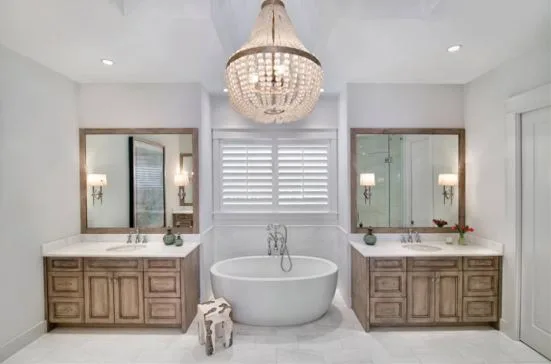When to Replace Your Sofa?
Your sofa is the heart of your living room, where you binge-watch shows, host friends, or just kick back after a long day. But even the coziest couch has a lifespan, and knowing when to replace it can save you from discomfort or an outdated vibe. In 2025, sofas are getting smarter, greener, and more versatile, making the decision to upgrade both exciting and practical. Whether it’s sagging cushions, a new life chapter, or simply a style refresh, this guide will help you spot the signs and make the right call. Ready to decide if your sofa needs a replacement or just a little TLC? Let’s break it down with tips tailored for today’s trends.
Is Your Sofa Showing Its Age?
Time takes a toll on even the best sofas, and physical wear is often the first clue it’s time to move on. Check for sagging cushions that no longer bounce back—lumps or uneven surfaces can make lounging a pain. Torn fabric, frayed edges, or stains that won’t budge are red flags, especially if they clash with your living room’s look. Listen for creaks or wobbles in the frame; a shaky structure means the sofa’s days are numbered. Comfort is key too—if your back aches after sitting or the cushions feel flat, your sofa isn’t doing its job. Grab a flashlight and inspect under the cushions for worn springs or dust buildup. These signs aren’t just cosmetic; they impact your daily comfort and the room’s overall vibe.
Life Changes, Sofa Needs Change
Your lifestyle can dictate when it’s time for a new sofa. Moving to a new place? A sofa that fit your old apartment might overwhelm a cozy studio or look lost in a spacious house. Growing your family—whether it’s kids, pets, or a new partner—might call for a bigger, sturdier, or pet-friendly model. If you’re working from home more in 2025, a sofa that doubles as a comfy workspace could be a game-changer. Maybe your style has evolved—you’re craving a sleek, minimalist vibe instead of that bulky sectional from a decade ago. Hosting more game nights or dinner parties? A modular sofa might better suit your social life. Life shifts like these are a perfect moment to reassess whether your sofa still fits your needs and your space.
Can You Extend Its Life Instead?
Refresh Without Replacing
Before you ditch your sofa, consider if a refresh could do the trick. Minor tears or faded fabric can often be fixed with reupholstering or a stylish sofa cover, saving you hundreds compared to buying new. Check out options to extend the lifespan with a sofa cover for an affordable, eco-friendly update that protects against spills and wear. Sagging cushions? Replacing the foam or adding supportive inserts might restore comfort. For small stains, professional cleaning or DIY solutions like baking soda can work wonders. However, if the frame is cracked or the sofa no longer supports your back, repairs won’t cut it. Compare the cost of fixing versus replacing—reupholstering a quality sofa might cost $200-$500, while a new budget sofa starts around $700. If the damage is structural, it’s time to shop.
Budget and Timing for a New Sofa
Replacing a sofa is an investment, so plan your budget and timing carefully. Quality sofas range from $700 to $2,000, but 2025 offers plenty of affordable options with financing or trade-in programs. Time your purchase for sales like Black Friday, January clearances, or spring model releases when discounts are deepest. Set aside savings for a sofa that balances durability, comfort, and style—cheap models might need replacing sooner. If funds are tight, explore second-hand marketplaces for gently used, high-quality pieces. Consider your long-term needs: a durable sofa might cost more upfront but save you from frequent replacements. Planning ahead ensures you get a sofa that fits your wallet and your living room’s vibe without compromising on quality.
What’s Hot in Sofas for 2025?
Today’s sofas are smarter and greener, making 2025 an exciting time to upgrade. Sustainable materials like recycled fabrics, bamboo frames, or eco-friendly leather are trending, appealing to eco-conscious buyers. Modular designs let you rearrange or expand your sofa for flexibility, perfect for small spaces or frequent movers. Smart features are big too—think built-in USB ports, adjustable firmness, or even sleep-tracking sensors for tech-savvy loungers. If your current sofa feels dated or lacks these modern perks, it might be time to trade up. These innovations not only boost comfort but also align with 2025’s focus on sustainability and functionality, making a new sofa a worthwhile investment for your home.
Choosing the Perfect Sofa
Find Your Fit
When picking a new sofa, focus on what works for your space and lifestyle. Measure your room to ensure the size fits—too big, and it overwhelms; too small, and it looks out of place. Test for comfort in-store or check online reviews for feedback on support and durability. Look for pet-friendly or stain-resistant fabrics if you have kids or animals. In 2025, eco-certifications like OEKO-TEX or GOTS signal sustainable, non-toxic materials, a must for health-conscious buyers. Many brands offer 100-night trial periods or free returns, so you can test at home. Consider your style too—sleek leather for a modern look or soft linen for a cozy vibe. A sofa that checks all these boxes will elevate your living room for years to come.
Deciding when to replace your sofa comes down to wear, lifestyle, and personal style. If it’s sagging, creaking, or just not your vibe anymore, it might be time for a change. Life events like moving or a growing family can also signal the need for a new model. Weigh repair options like sofa covers against the cost of a new piece, and time your purchase for 2025 sales. With sustainable materials and smart features trending, a new sofa can refresh your space while aligning with modern values. Start by inspecting your current sofa, then explore options that fit your budget and needs. Ready to upgrade? Share your sofa journey online and inspire others!





